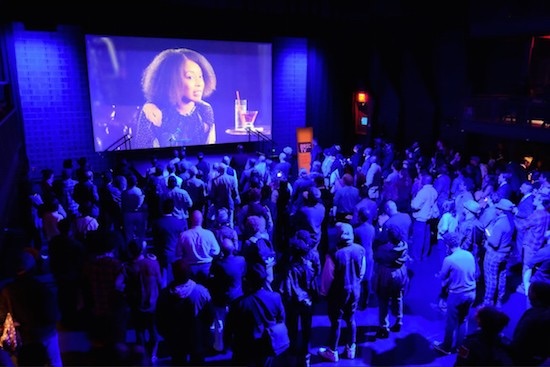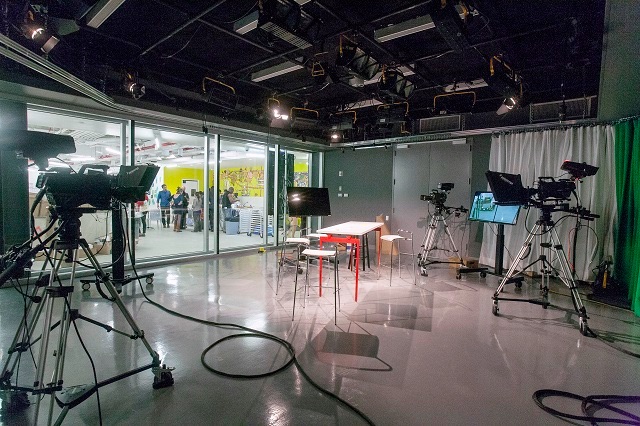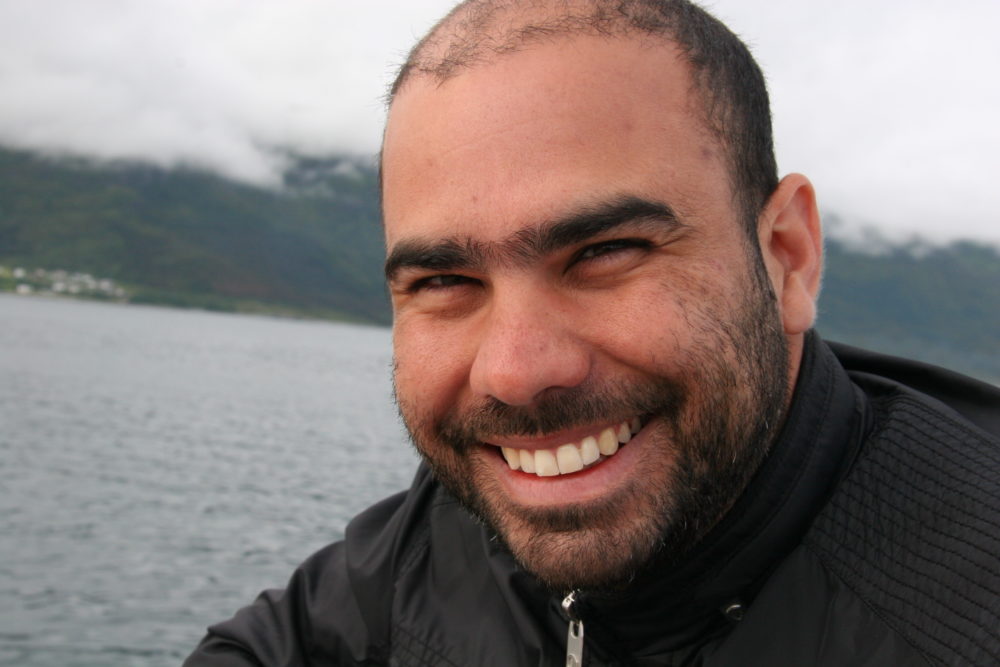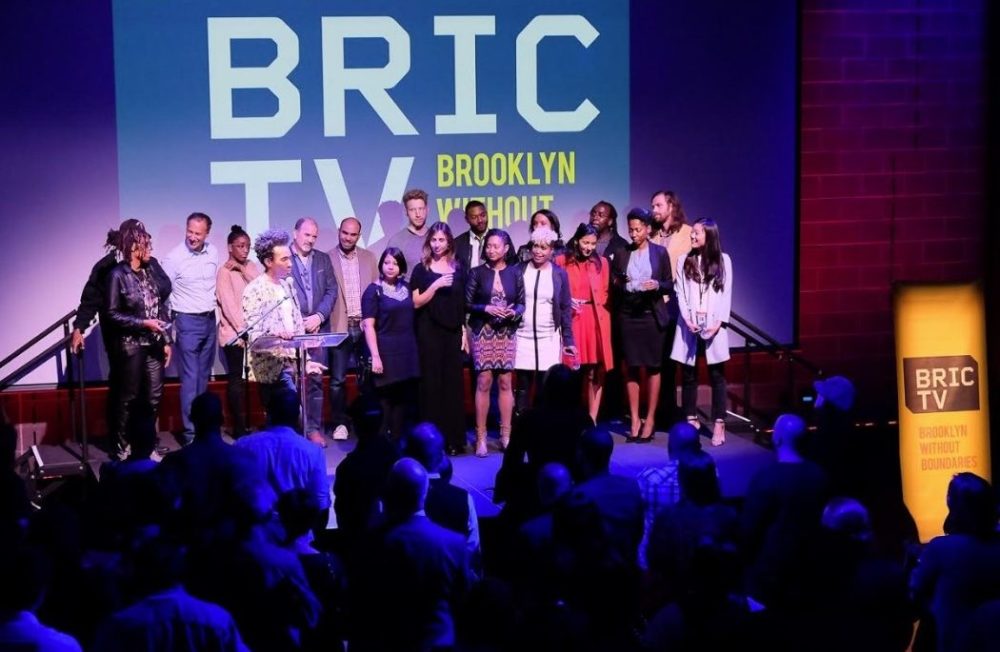“We’re looking for individual voices, underrepresented communities and a strong connection to Brooklyn,” Aziz Isham, executive producer at BRIC TV, declared. Based in, you guessed it, Brooklyn, BRIC is the largest free cultural-programming presenter in New York City. This year BRIC broke out, earning 19 New York Emmy Award nominations, 13 of which are attributed to Isham’s projects. These shows–a mix of digital series, live programs, and public access TV–cover a striking variety of Brooklyn topics, from a segment about an entrepreneur donating shoes and socks to the city’s homeless to a profile of Brooklyn’s last slot-car raceway. But no project is more indicative of BRIC TV’s growing success in inventive cultural programming than its web series The Show About the Show, created by award-winning independent filmmaker Caveh Zahedi.
The Show About The Show has a simple yet somehow impossibly complicated premise. Each episode tells the story of how the last episode was made, starting with the pitch of the series itself. You as the viewer see the story evolve as Zahedi himself does. “I’m starting to see a road to an ending,” says Zahedi, who is also the protagonist of the meta series, “but it will end when it ends and the last episode will be about why and how it’s ending.”

A launch party for a new series in BRIC’s ballroom (Photo courtesy of BRIC TV)
Six episodes of The Show are online now on BRIC TV’s YouTube channel (as are all BRIC’s shows), and they’ve also been recut into a feature that the New York Times called “an undeniably fascinating film.” The movie version is playing in limited release around the U.S. and will screen for one night only at Brooklyn’s Alamo Drafthouse on April 11.
A Bumpy Path to Success
It wasn’t always a smooth ride for the acclaimed project. More like a drive on the BQE. As we learn in the pilot episode, Why Did We Greenlight This?, Zahedi pitched several other show ideas to Isham, each rejected for one reason or another. Despite this rocky start, Isham admits he never doubted that Zahedi would eventually bring him something perfect for BRIC. “In his own way, Caveh is actually an incredibly trustworthy filmmaker. More trustworthy than many, in fact, because of his rigorous devotion to being honest with himself and those around him. [So] trusting Caveh isn’t something I struggle with.”

TV studios at BRIC, situated on Fulton Street in the Brooklyn Cultural District (Photo courtesy of BRIC TV)
Taking risks on off-the-mainstream talent is what BRIC is about. The TV unit is part of a larger nonprofit group, originally called Brooklyn Information & Culture, launched in 1979 to foster the borough’s up-and-coming artists. When BRIC hired Isham two years ago to start a TV division, they chose a seasoned pro. Isham studied anthropology at Yale, got his first TV job at 60 Minutes, and later worked for the Discovery and History channels before producing independently for brands like National Geographic. But going local seems to suit him. “Part of our mission is to incubate and encourage local filmmakers,” says Isham, “so if The Show helps Caveh gain the recognition his work deserves, it will be a big win for us all, including the viewers. We [also] like projects with an activist angle, and we like projects that would never be green-lit by a major network.”
The Recipe for Brooklyn TV
Yet even daring, local-leaning productions need to be practical about how they spend their limited funds to reach their cinematic ambitions. “I think that when it comes to low-budget productions, it’s all about taking a leap of faith with the team involved and making sure that the expectations are realistic and achievable,” Isham says. “We don’t green-light projects that are dependent on multiple locations or visual effects or art direction, obviously. And it helps to seek out filmmakers who are thriving, or at least creating, outside the traditional network-TV and Hollywood ecosystems. We think there’s a lot of room between free and million-dollar pilots, and that’s the space that BRIC TV operates inside.”

Aziz Isham, executive producer of BRIC TV (Photo by Marisa Buchanan)
Zahedi’s show is a outstanding example of this ambitious-yet-low-budget strategy in action. Other than the on-screen talent, most of whom play themselves, Zahedi’s crew is generally one camera and one sound person. And due to the loose structure and micro-budget of the series, filming for a single episode can take anywhere from one to six months, averaging about two or three.
The project and its process weren’t entirely new for Zahedi, whose previous film work has also been largely autobiographical and self-referential. Even so, there were still some surprises this time around. “The biggest surprise was the audience reaction,” he admits. “It was much more enthusiastic than for most of my previous work. The second biggest surprise was how much more exhausting an episodic show would be.”
Among BRIC TV’s other notable shows are the comedy Brooklynification, which has been called “a brownstone version of Portlandia,” and Actually, No, a series of mockumentary shorts about such inventions as Artisanal Spam Bushwick and petty hackers, who break into computers to little effect.

The TV team onstage at a launch party (Photo courtesy of BRIC TV)
It’s easy to imagine how exhaustion factors in at the impressively productive BRIC TV studio, and Isham is no stranger to the feeling. “This spring we have two projects at Tribeca Film Festival, one at Hot Docs, the New York Emmy nominations, an upcoming #BHeard Town Hall on Public Trust in the Media with the Columbia Journalism Review, and a very exciting batch of new programs that will be premiering this fall, so … well … we’re busy.”
Not that he’s complaining about being in a situation where he could launch 19 series in just two years. “To be a part of such a forward-facing organization that’s on the cutting edge of next-generation community media and public broadcasting is a real thrill,” said Isham. “As an added bonus, my office is inside what’s basically a giant public-art center, so I’m constantly exposed to fresh ideas, great art and music, and exceptionally talented producers, journalists, and filmmakers.”